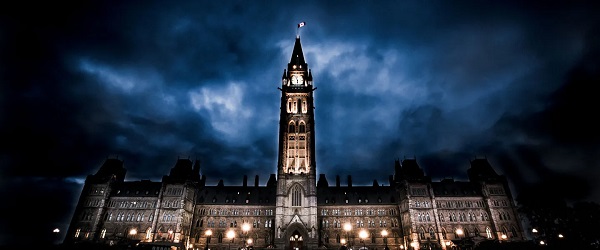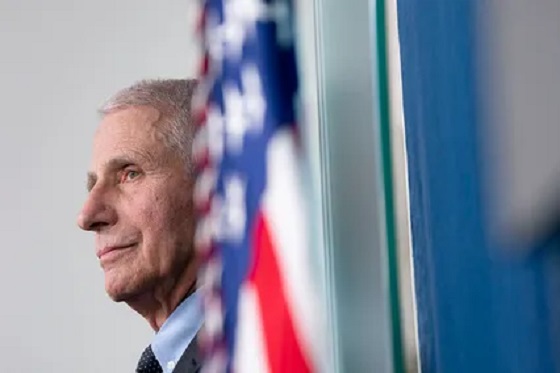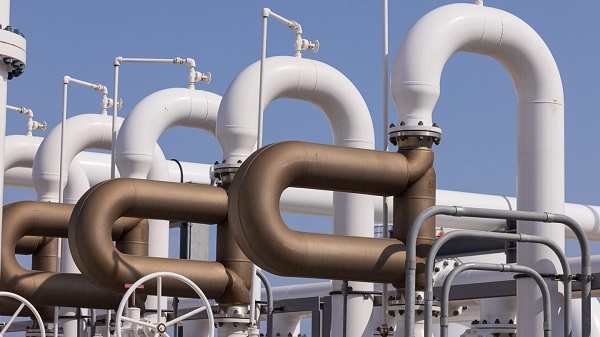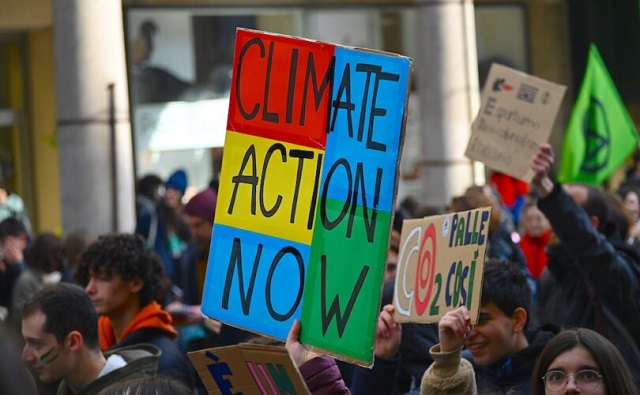Fraser Institute
Legal rights should not depend on lineage—Indigenous or otherwise

From the Fraser Institute
By Bruce Pardy
Once upon a time, legal rights depended on who your parents were. The ruler was the son of the ruler before him. If your parents were serfs, you were a serf, too. Lineage was destiny.
A judge of the British Columbia Supreme Court recently found that the Cowichan First Nation holds Aboriginal title over 800 acres of government land in Richmond, B.C. But that’s not all. Wherever Aboriginal title is found to exist, said the court, it is a “prior and senior right” to fee simple title, whether public or private. That means it trumps the property you have in your house, farm or factory.
If the Cowichan decision holds up on appeal, it would mean private property is not secure anywhere a claim for Aboriginal title is made in Canada including B.C. and New Brunswick. In November, a judge of the New Brunswick King’s Bench suggested that where such a claim succeeds, the court may instruct the government to expropriate the private property and hand it over to the Aboriginal group. Don’t dismiss these decisions as isolated or not having national implications. They are the logical extension of the Supreme Court of Canada’s extensive Aboriginal law jurisprudence.
They are also consistent with core Canadian beliefs. Special status for Aboriginal people is deeply ingrained in Canadian culture and enshrined in the Constitution. Aboriginal rights are widely regarded as the natural and proper order of things. But in fact, they are the opposite. In a free country governed by the rule of law, Aboriginal rights should not exist.
Invasion, migration and mixing is the history of humanity. The Romans invaded the British Isles in 55 B.C. and conquered the place about 100 years later, on their second try. By 500 A.D., Saxons had established themselves as the dominant power. In 1066, the Normans overthrew the Saxon kingdom. Today, British law does not have different rights for descendants of Romans, Saxons and Normans. The people are British.
It wouldn’t have seemed that way in 1066. When aliens force their way into a territory, the inhabitants understandably resist. They try to preserve the memory that the place belongs to them. But over centuries, things change. People mix, culturally and genetically. Descendants of inhabitants and invaders marry and procreate. Their offspring do the same. More people from other different places arrive and mix, too. Everyone born there is native to the place. The culture is neither what existed before the invasion nor what the invaders brought with them. No one alive remembers either. The culture in which they live is a distinctive derivative.
Once upon a time, legal rights depended on who your parents were. The ruler was the son of the ruler before him. If your parents were serfs, you were a serf, too. Lineage was destiny. But like the culture, the law evolved. Eventually, everyone got the vote and the right to run for office. Everyone could own property and was free to buy and sell it. Everyone could marry who they chose, and divorce as they saw fit.
But in Canada, this old idea has been reconstituted as a progressive imperative. Under section 35 of the Canadian Constitution, the legally privileged group is Aboriginal, not European. Indigenous people have the same legal rights as any other Canadian citizen. But they also have rights no one else may claim. Depending on their lineage and group affiliations, they may have treaty rights. They may be entitled to tax exemptions. They may receive exclusive benefits. They may claim positions on governing bodies and in institutions reserved only for them. They may be entitled to procedures and considerations in criminal sentencing that no one else receives. Their group may be granted Aboriginal title on land from which other Canadians are excluded.
This special status has not benefited most Aboriginal people. But it has enriched their elites who administer the substantial largesse that flows from government coffers. Aboriginal property is a group right controlled by Aboriginal leaders. Individual Indigenous people do not own plots of land on reserves or on lands subject to Aboriginal title.
Dependency endures because governments and many Indigenous leaders want it that way. Former Mount Royal University professor Frances Widdowson, among others, has argued that we can trace persistently poor social conditions experienced by many Indigenous people to a thriving “Aboriginal industry.” Indigenous and non-Indigenous institutions and individuals—chiefs, leaders, consultants, managers, bureaucrats, politicians, lawyers and others—have a vested interest in the existing system of Aboriginal rights and status as special groups. Section 35, as interpreted by the Supreme Court of Canada, constitutionally entrenches this system. The recent Cowichan decision is just one of its consequences.
Let’s say the truth out loud. The British and the French conquered the territory now known as Canada. They weren’t invited, and they couldn’t have been persuaded to leave. They came with numbers and technology that overwhelmed the cultures that were there at the time, many of which were engaged in violent conflicts with their neighbours. Many people on the continent were not the first inhabitants of their territories. Treaties made with the Crown made the best of a bad situation. Lands not surrendered by treaty were no less subsumed by the new people, culture and country.
Most importantly, none of this matters now. Generations have passed. We are all Canadian citizens mixed together. Some people have Aboriginal lineage, some have British or French, some have both, and many have none of the above. It’s time to reject the idea that legal rights depend on lineage. In a free country, laws apply not to distinctive peoples, but to people.
Automotive
Governments in Canada should get out of EV business as Trump pulls the plug

From the Fraser Institute
Lee Zeldin, administrator of the U.S. Environmental Protection Agency (EPA), recently announced that the EPA will scrap a 2009 Obama-era “Endangerment Finding” that held: “The Administrator finds that the current and projected concentrations of the six key well-mixed greenhouse gases—carbon dioxide (CO2), methane (CH4), nitrous oxide (N2O), hydrofluorocarbons (HFCs), perfluorocarbons (PFCs), and sulfur hexafluoride (SF6)—in the atmosphere threaten the public health and welfare of current and future generations.”
After its 2009 enactment and 2016 reaffirmation, according to the U.S. Congressional Research Service, the Endangerment Finding would be the legal rationale to set greenhouse gas (GHG) emission standards for cars and light trucks, power plants, and facilities in the oil and gas sector.
There will no doubt be legal challenges to the Trump administration’s decision to terminate the finding (as there seemingly is for everything Trump), however in the event that it proceeds (and it likely will), one can expect to see the elimination of a fair number of large-scale environmental regulations that could have ripple effects on the Canadian economy.
From a Canadian perspective, the most important aspect of the repeal is that it will likely lead to the complete withdrawal of the U.S. federal government’s support of vehicle electrification. The Trump administration has already killed electric vehicle (EV) mandates and federal subsidies for the purchase of EVs, but remaining production mandates for car companies (under the guise of EPA fleet fuel-economy standards) are also likely to end, and with that, EV manufacturing and sales will likely plummet. This will leave EVs in the niche they’ve held—novelty items for hobbyists or luxury toys for well-heeled eco-virtue signallers. And California can’t bail this one out—its own authority to set more stringent environmental standards for vehicles emissions has also been terminated, along with its ability to drive the EV revolution forward.
So, policymakers in Canada should shelve (or drop into the round file) any expectation of exporting significant EV-related goods into the U.S. market. At the least, governments should suspend or eliminate Canadian EV sales mandates and “investments” based on an expected U.S. market for such goods, unless governments want to give taxpayers a soaking.
The federal government, and some provincial governments, may choose to continue supporting vehicle electrification within Canada and the creation of export capacity for EV parts and components (such as batteries) outside of the U.S. market for any number of reasons. They might justify this support based on concerns over air quality or GHG emissions. However, the logistics of such endeavours, particularly tech sales out of North America, would be daunting. EV components tend to be heavy, require exotic materials and long costly shipping lines to Europe, Asia and points abroad. And planning to sell EV components to Asia is like preparing to sell ice to the Inuit or carrying coal to Newcastle.
Canada’s vehicle electrification fixation has been dubious from the start, much like the U.S. fixation, due to the vast transport distances, rugged topography, inadequate and unaffordable battery tech and charging capacity, and in some precincts, a great deal of cold weather.
But whether one agrees with the death of the Endangerment Finding or not, a pragmatic observer should recognize that, for the next good while at least, the United States is pulling the plug on North America vehicle electrification and subsequently any expectations of profit from the previous EV regulatory milieu. For Canada, I’d argue, that means killing the EV mandate and cancelling/trying to claw back as much of the government’s “investments” in EV and EV battery technology and manufacturing as quickly as possible.
Business
Closing the economic and fiscal books on the Trudeau era

From the Fraser Institute
By Jason Clemens, Grady Munro and Milagros Palacios
The broadest measure of living standards showed almost no improvement over the Trudeau government’s 10-year reign. Contrast that with the 26.2 per cent increase in per-person GDP during the 10-year era of the Chrétien government and one gets a sense of the enormity of the foregone prosperity during the Trudeau era.
Sufficient time has passed—from Justin Trudeau stepping down as prime minister and the Carney government introducing changes—to look back and document the Trudeau government’s policies and their effects. Such reflection offers lessons for the new government as it considers its own policy options.
The Trudeau era is best characterized as a marked expansion of the role and scope of the federal government in the economy and broader society.
One measure of the size of the federal government is government spending as a share of the economy (i.e. GDP), which increased from 12.9 per cent in 2014/15, the year before Trudeau was elected, to an estimated 16.0 per cent in 2024/25. Though this might seem like a small change, remember it’s measured relative to the entire Canadian economy (which was over $3 trillion in 2024). So small percentage-point changes represent tens of billions of dollars reallocated away from Canadian families, entrepreneurs and businesses to finance spending by Ottawa.
In dollars, federal spending (excluding interest costs on debt) is expected to nearly double from $256.2 billion in 2014/15 to an estimated $489.7 billion in 2024/25 (nominal).
The Trudeau government recorded the six-highest levels of per-person federal spending in Canadian history (adjusted for inflation)—higher than during both world wars, the deep recession of the early 1980s and the financial crisis of 2008/09.
Federal government employment skyrocketed from 257,138 in 2014 to 357,965 in 2025, an increase of 39.2 per cent. For context, the Canadian population increased by 16.6 per cent during this period.
And despite federal revenues increasing from $279.9 billion in 2014/15 to an estimated $495.2 billion in 2024-25 (nominal), the federal government borrowed extensively to finance its expansion. Specifically, total federal debt increased from $1.06 trillion in 2014/15 to a projected $2.15 trillion.
The Trudeau government introduced new programs and expanded existing ones.
For instance, financial assistance to families with children under 18 (now called the Canada Child Benefit) was massively expanded, growing from $14.3 billion in 2014/15 to an estimated $28.2 billion in 2024-25 (nominal).
Direct spending on Indigenous peoples almost tripled to $32.0 billion, which doesn’t include the massive increase in the number and value of lawsuits government has settled with First Nations.
And transfers to the provinces for health care, social services and equalization increased from $61.4 billion in 2014/15 to a projected $94.3 billion in 2024-25 (nominal).
Again, the Trudeau government also introduced a host of new programs including national dental care, pharmacare and daycare. The expected spending on these new programs is not incidental—estimates from the Parliamentary Budgetary Officer suggest combined annual costs could reach $12.3 billion this year (2025/26). And critically, all three programs are in areas of provincial responsibility, which has increased federal-provincial tensions.
The Trudeau era also included a marked expansion in regulations, particularly related to the government’s pursuit of “net-zero” by 2050, which includes restricting growth in the oil and gas sector and broad regulation of the economy including, for instance, new regulations on homebuilding.
The guiding principle of the Trudeau government—which was a marked break from the previous Harper, Martin and Chrétien governments—was that more spending, taxing and regulating by Ottawa leads to greater economic growth and prosperity for Canadians. That promise of government-led growth and prosperity can now be tested, and hopefully inform the new Liberal government about the foibles of trying to achieve prosperity through more government.
Canada’s economy grew at an average annual rate of 1.9 per cent between 2016 and 2024 (inflation-adjusted). While 1.9 per cent annual growth is positive (albeit lackluster), this ignores population changes. When we adjust for population to examine changes in per-person GDP (a common indicator of living standards), average annual growth drops to a meagre 0.3 per cent over the period (inflation-adjusted). To put this into perspective, according to an analysis by the former chief analyst at Statistics Canada, that recent growth in per-person GDP in Canada was the worst on record since the Great Depression.
Specifically, per-person GDP (inflation-adjusted) stood at $57,491 at the end of 2015 when Trudeau was first elected. In the first quarter of 2025, when Trudeau resigned, it reached $59,146 (again inflation-adjusted)—an increase of just 2.9 per cent over the entire 10-year period. In other words, the broadest measure of living standards showed almost no improvement over the Trudeau government’s 10-year reign. Contrast that with the 26.2 per cent increase in per-person GDP (inflation-adjusted) during the 10-year era of the Chrétien government (from the end of 1993 to the end of 2003) and one gets a sense of the enormity of the foregone prosperity during the Trudeau era.
At the heart of Canada’s dismal economic performance during the Trudeau era is a collapse in business investment and confidence more broadly. On average, during the Trudeau years, business investment in factories, warehouses, machinery and equipment declined by 0.5 per cent each year (inflation-adjusted) compared to the positive average annual growth of 5.5 per cent under the Chrétien government.
Even if private business investment is more broadly measured to include housing, which was the one bright spot in the investment data during the Trudeau era, the average annual increase in business investment (inflation-adjusted) is a meagre 0.1 per cent compared to 5.2 per cent under Chrétien.
Simply put, businesses and private investors lost confidence in Canada. Indeed, the media, including international media, was littered with stories about Canada being a place where business could not get done.
Another way to illustrate just how much the private sector struggled during the Trudeau era is to compare private versus government-sector employment. From 2015 to 2024, private-sector employment (including self-employment) increased by 13.4 per cent compared to 27.0 per cent for government-sector employment (federal, provincial and local). During the Chrétien era, it was the opposite—government-sector employment grew by 4.7 per cent compared to 27.4 per cent for the private sector.
Getting an historical perspective of the policies, their effects and the performance of the federal government during the Trudeau era is important for the current government to learn from past mistakes and avoid making them again. The clear lesson is that bigger government does not lead to economic growth or prosperity but rather to stagnation and serious debt accumulation. With this information, the Carney government should be armed with evidence that a new direction is needed to achieve better results that improve the living standards of Canadians.
-

 Alberta1 day ago
Alberta1 day agoA misinformation bubble in action—Egale Canada v. Alberta
-

 Energy1 day ago
Energy1 day agoEnergy investors see less opportunity in Canada compared to the United States
-

 Dan McTeague1 day ago
Dan McTeague1 day agoTime is running out, Mr. Carney…
-

 COVID-1913 hours ago
COVID-1913 hours agoAgencies ordered to delete worker COVID vaccine records
-

 Business4 hours ago
Business4 hours agoCanada’s new pipeline opens a direct oil route to India, offering a sanctions-proof rival to Russian crude.
-

 Alberta5 hours ago
Alberta5 hours agoIndia and Spain are buying Canadian oil…from the U.S.
-

 Alberta20 hours ago
Alberta20 hours agoAlberta fights court order blocking ban on transgender surgeries, drugs for children
-

 Daily Caller17 hours ago
Daily Caller17 hours agoUS Judge Deals Devastating Blow to Climate Lawfare Campaign against Oil and Gas Producers









